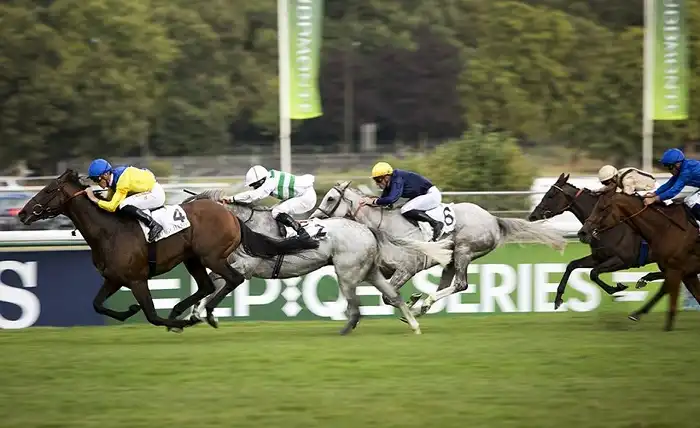Filière Turf: A Guide to the French Horse Racing System

Horse racing is a popular sport and gambling activity in France, where it has a long and rich history. The French horse racing system, also known as the filière turf, is a complex and organized network of institutions, actors, and events that regulate and promote the sport. In this blog post, we will explain what the filière turf is, how it works, and what are some of its benefits and challenges.
What is the filière turf?
The filière turf is the term used to describe the French horse racing system, which consists of four main components:
- The breeding sector, which is responsible for producing and selecting the horses that will compete in the races. The breeding sector includes stud farms, breeders, veterinarians, and geneticists.
- The training sector, which is responsible for preparing and improving the horses for the races. The training sector includes trainers, jockeys, drivers, grooms, and veterinarians.
- The racing sector, which is responsible for organizing and conducting the races. The racing sector includes racecourses, racing authorities, stewards, judges, and officials.
- The betting sector, which is responsible for generating and distributing the revenues from the bets on the races. The betting sector includes operators, such as PMU (Pari Mutuel Urbain), bookmakers, and online platforms.
The filière turf is governed by a set of rules and regulations that ensure the fairness and integrity of the sport. The main authority that oversees the filière turf is France Galop, which is in charge of flat racing and steeplechase racing. Another authority is Le Trot, which is in charge of harness racing and trotting racing.
Read more about Prono Vérité Turf: How to Bet Smartly on Horse Racing
How does the filière turf work?
The filière turf works as a cycle that involves the four sectors mentioned above. The cycle can be summarized as follows:
- The breeding sector produces and selects the horses that have the potential to become champions. The horses are registered and classified according to their breed, age, sex, pedigree, and performance.
- The training sector prepares and improves the horses for the races. The horses are trained by professionals who use various methods and techniques to enhance their physical and mental abilities. The horses are also tested and monitored by veterinarians who ensure their health and welfare.
- The racing sector organizes and conducts the races. The races are held at different racecourses across France and abroad. The races are divided into different categories and levels according to the type of race, the distance, the surface, the prize money, and the eligibility criteria. The races are also subject to strict rules and controls that ensure the safety and fairness of the sport.
- The betting sector generates and distributes the revenues from the bets on the races. The bets are placed by different types of customers, such as casual gamblers, professional punters, or syndicates. The bets are collected by different types of operators, such as PMU, bookmakers, or online platforms. The bets are then distributed among the winners, the operators, the state, and the filière turf.
What are some benefits and challenges of the filière turf?
The filière turf has many benefits for France and its stakeholders. Some of these benefits are:
- It contributes to the economic development of France by creating jobs, generating income, supporting rural areas, and attracting tourism.
- It contributes to the social development of France by fostering culture, education, entertainment, solidarity, and diversity.
- It contributes to the environmental development of France by preserving natural resources, promoting animal welfare, and reducing carbon footprint.
However, the filière turf also faces many challenges in today’s world. Some of these challenges are:
- It has to cope with the competition from other sports and gambling activities that offer more attractive options for customers.
- It has to adapt to the changes in customer behavior and preferences that demand more convenience, transparency, and innovation.
- It has to comply with the regulations and expectations from various authorities and stakeholders that require more accountability, responsibility, and sustainability.
Conclusion
The filière turf is a guide to the French horse racing system that consists of four main sectors: breeding, training, racing, and betting. The filière turf works as a cycle that involves these sectors in producing and selecting horses; preparing and improving horses; organizing and conducting races; and generating and distributing revenues from bets on races. The filière turf has many benefits for France’s economic, social, and environmental development; but it also faces many challenges from competition; customer changes; regulation; expectation; etc.



